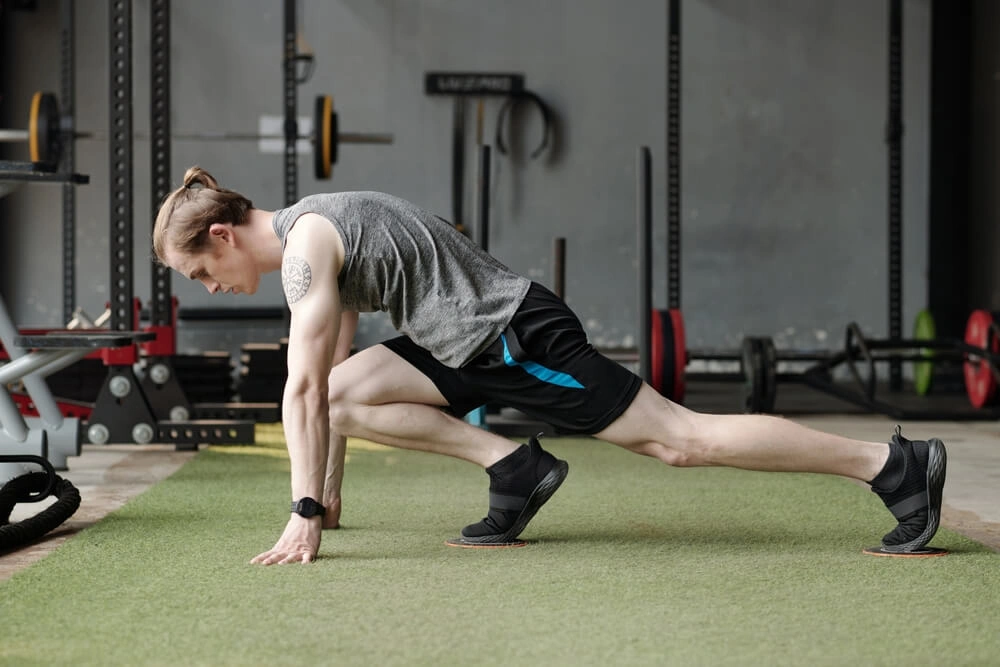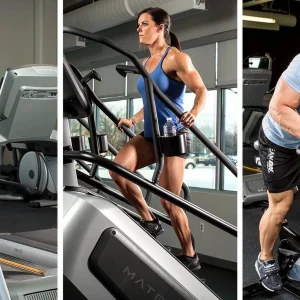If you’re looking for a fast-paced, full-body move that builds strength and boosts your heart rate, the mountain climbers exercise is a go-to favorite among trainers and athletes. This high-intensity, dynamic movement is simple to learn, requires no equipment, and delivers serious results — whether you’re working out at home or in the gym.
In this article, we’ll break down what the mountain climbers exercise targets, how to do it safely, and how you can modify it to suit your fitness level. Plus, you’ll discover tips and variations to keep your workouts fun, effective, and challenging.

Content
What Muscles Does Mountain Climbers Exercise Work?
Mountain climbers may look like a cardio move — and they are — but they also build muscular strength and endurance across the body.
Primary muscle groups activated:
- Core muscles: The constant pulling of knees to chest fires up your rectus abdominis, transverse abdominis, and obliques.
- Shoulders and chest: Holding a plank position keeps your deltoids and pectoral muscles engaged throughout.
- Arms and triceps: Isometric contraction in the upper body helps strengthen arms.
- Hip flexors: Essential for the rapid knee-driving motion.
- Legs: Quads, hamstrings, and glutes support your lower body as it moves under tension.
Cardiovascular and metabolic benefits:
Because you’re moving fast and engaging large muscle groups simultaneously, the mountain climbers exercise is excellent for getting your heart rate up and burning calories — a win for fat loss and cardio endurance.
How to Do Mountain Climbers Exercise with Proper Form
Like any high-intensity exercise, proper form ensures you’re targeting the right muscles and avoiding injury.
Step-by-step guide:
- Start in a high plank with arms straight, shoulders stacked over wrists, and your body in a straight line from head to heels.
- Engage your core, and keep your back flat—avoid arching or letting your hips sag.
- Drive one knee toward your chest, keeping the other leg extended.
- Quickly switch legs, bringing the other knee in while pushing the first leg back out.
- Continue alternating legs in a running motion, gradually increasing your speed as control allows.
Aim for 30 to 60 seconds of controlled movement to start. As your endurance builds, you can increase duration or reps.
Benefits of Mountain Climbers Exercise
The mountain climbers exercise offers more than just a cardio blast. It’s a functional move that helps improve balance, mobility, and coordination, too.
Top benefits include:
- Builds core strength: Helps with posture, balance, and reduces risk of back pain.
- Increases endurance: Elevates heart rate quickly — ideal for HIIT and Tabata workouts.
- Enhances coordination: Synchronizing arm, leg, and core movement sharpens neuromuscular control.
- Boosts metabolism: Activating large muscle groups increases calorie burn.
- Improves agility: The fast-paced motion translates to better athletic performance.
You can plug mountain climbers into almost any workout — from warm-ups to high-intensity finishers.
Mountain Climbers Exercise Variations
Level up or scale back. Here are several variations that adjust intensity and challenge different muscle groups.
Beginner-Friendly Modifications
- Incline Mountain Climbers: Place hands on a bench or box to reduce pressure on your wrists and core.
- Step Climbers: Slow down the pace and step each foot forward instead of running to build strength first.
Intermediate Variations
- Cross-Body Mountain Climbers: Drive each knee across to the opposite elbow. This targets the obliques more directly.
- Mini-Band Mountain Climbers: Add a resistance band around your thighs or feet for extra load.
Advanced Progressions
- Spider Climbers: Bring your knee to the outside of the elbow. This challenges flexibility and stability.
- Bosu Mountain Climbers: Place hands on a BOSU ball for added instability and core activation.
Mixing in variations keeps your workout fresh and prevents muscle adaptation.
Tips for Doing Mountain Climbers Safely and Effectively
Want to avoid burnout or injury while maximizing the benefits? Follow these expert-backed tips:
- Maintain a neutral spine: Don’t let your lower back arch — tuck your pelvis slightly and keep abs braced.
- Avoid bouncing: Your hips shouldn’t rise and fall dramatically — focus on smooth, stable transitions.
- Start slow, build speed: Control is more important than pace when learning the move.
- Keep wrists aligned: Stack shoulders directly over wrists to reduce strain on joints.
- Breathe continuously: Exhale with every other rep to keep oxygen flowing and prevent fatigue.
Remember: consistency beats intensity. Form first — then add speed, reps, and complexity.
Sample Mountain Climbers Exercise Workout
Try this quick 5-minute circuit to integrate mountain climbers into your routine:
| Round | Exercise | Duration |
| 1 | Standard Mountain Climbers | 30 sec |
| 2 | Cross-Body Climbers | 30 sec |
| 3 | Rest | 30 sec |
| 4 | Spider Climbers | 30 sec |
| 5 | Sliding Climbers (if available) | 30 sec |
Repeat for 2–3 rounds based on your fitness level.
The Bottom Line
The mountain climbers exercise is more than a cardio move — it’s a total-body conditioning drill that builds strength, improves heart health, and enhances athletic performance. With just a few minutes, you can get a workout that targets your core, legs, arms, and cardiovascular system all at once.
Whether you’re a beginner looking to get started or an athlete looking for an intense finisher, mountain climbers can be customized for your goals. Start slow, focus on form, and climb your way to stronger, leaner, more efficient movement.
FAQs
How long should you do mountain climbers for results?
Beginners can start with 30-second intervals and build up to 60 seconds or more. For best results, include them in HIIT workouts 3–4 times a week.
Are mountain climbers good for belly fat?
Yes. Mountain climbers are a full-body exercise that increases heart rate and burns calories, helping reduce overall body fat, including belly fat.

Jesus is a health blog author who has been writing about nutrition, fitness and healthy living for over 10 years. He also loves to run, hike and bike with her wife.






